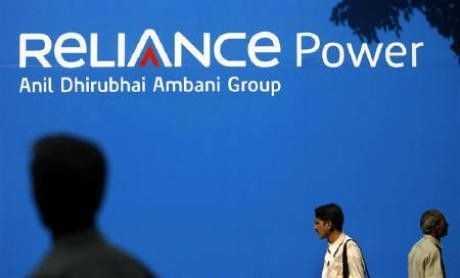BP-Reliance deal may usher in fresh oil, gas investments

BP's $7.2-billion deal to jump into India's oil and gas sector with Reliance Industries is the first sign of new investment that could attract more players, helping to boost output and meet surging demand.
The world's third-largest economy is expanding at more than 8 percent a year. But it struggles to pump even a third of the oil it guzzles, while gas use -- limited by poor infrastructure -- is already 30 percent more than production.
India has sought to attract the big international players since 1999 with its New Exploration Licensing Policy (NELP) but still only two foreign companies -- BG and Cairn Energy -- are producing any serious amounts in the country.
This deal brings in one of the majors in a material way. Twenty-three blocks and an important gas play, said Richard Quin, lead analyst for Middle East, North Africa and India at energy research consultancy Wood Mackenzie. I suspect the Indian government is very happy about it.
BP, which has only one block, picked up through Indian government auctions, is now paying privately-owned Reliance for a 30 percent stake in 23 of its blocks, including the big gas producer D6 in the Krishna Godavari basin.
The blocks now produce about 1.8 billion cubic feet/day (bcf/d) -- more than 40 percent of India's total production and more than 30 percent of total consumption.
The British-based company figures there are at least 15 trillion cubic feet (tcf) of gas resources in the blocks -- enough to meet India's current rate of consumption for seven years.
It is BP's biggest investment in exploration and production in Asia, with a potential total of $20 billion linked to exploration successes.
It would be wrong to downplay the prospectivity of the 23 blocks. There has to be a reason BP bought in. Fundamentally, BP is in the business of producing hydrocarbons, Quin said.
At the same time, BP could use its technical expertise to boost output at Reliance's D6 block.
It is India's biggest gas find but output has slipped because of technical problems to about 52 million cubic metres a day (mcm/d) from 60 mcm/d in October and short of a target 80 mcm/d.
Reliance Industries will benefit from the tie-up with BP by being able to take advantage of BP's technical capabilities, analysts said, in turn enhancing the valuation of India's biggest company's existing assets.
BP India head Sashi Mukundan would not be drawn on future output estimates.
SCORCHING INFLATION, SOARING DEMAND
The chance to boost domestic production has clear attractions for India's coalition government as it struggles to balance the need for growth to help half a billion people out of poverty with pressure to keep a lid on scorching fuel and food inflation.
BP expects gas demand in India to grow nearly five percent per year to 2030 -- slightly slower than the economy's current pace near 9 percent. Consumption, limited by creaky infrastructure, should exceed 15 bcf/d by then, according to BP.
Wood Mackenzie is more conservative but still expects demand to hit 13.18 bcf/d in 2030 from 5.34 bcf/d in 2010.
But New Delhi will have to ease controls on pricing in order to ensure new, potentially more expensive, output comes onstream.
New discoveries would need a higher gas price than is currently being charged for the D6 gas ($4.2/mmbtu), RBS analysts said in a research note.
BP's Mukundan said the market could support higher prices.
Latent demand is being fully utilised and ... new demand will be created on market fundamentals. It's not going to be based on subsidy regime, he said.
Oil and gas prices internationally are near record highs but in India, the government controls pricing and subsidises output from older fields operated by state-run companies in an attempt to foster industrial growth and cushion its poorest voters.
The country's population is the second-biggest in the world but half a billion people have under $1.25 a day to live on.
BP and Reliance are also planning to join together to source and market gas in India -- likely to focus on liquefied natural gas (LNG) and potentially the construction of a terminal, giving even more choice for the energy-starved economy.
India will definitely benefit from this deal as Reliance Industries could invest ... for development of infrastructure, Amrit Pandurangi, senior director at Deloitte India, said.
CAIRN CAUTION
India's upstream regulator was even more enthusiastic.
For the country it is a very, very positive signal. This will give a massive boost to investment to India, said S. K. Srivastva, head of India's upstream regulator, the Directorate General of Hydrocarbons.
Other global majors will also realise now that India provides a favourable and safe business environment, for exploration and production, he added.
But whether India can now attract other energy firms to look again at its hydrocarbons may depend instead on the outcome of another multi-billion dollar investment -- Vedanta Resources' bid to buy control of Cairn Energy's assets.
The acquisition has been bogged down over royalty issues with state-run partner Oil and Natural Gas Corp for six months and now India's cabinet has got involved, potentially triggering further delays.
Industry experts were optimistic, however, with Wood Mackenzie's Quin seeing Reliance's presence as a big plus.
Aligning with Reliance is an important part of the equation. They can get things done in India, he said.
© Copyright Thomson Reuters {{Year}}. All rights reserved.





















